
Story By Jenn Gidman
Images By Jonny Hill
Leap Into New Landscapes with Jonny Hill
Sandstone canyons, hot springs, and mountain lakes are the scenes that now catch photographer Jonny Hill’s eye with his Tamron wide-angle and zoom lenses.
View the previous Tamron story here.
A Leap Into New Landscapes
Growing up in the English countryside, Jonny Hill had a deep appreciation for nature. Since his father always carried a camera around, he also had an early exposure to photography that helped him place the landscapes he saw in a more artistic context. But it was when he moved to the US, and specifically to Utah, when his eyes opened more to the photographic possibilities around him.
“I’d been raised surrounded by rolling green hills and farmland, which was very nice, but after a bit, that scenery starts to look the same,” he says. “I’ve been in Utah for five years now, and the mountains still leave me in awe each time I see them. And if I travel south about three hours, I’m in the desert, surrounded by completely different landscapes.”
One of the hallmarks of Jonny’s images is the human element. “I try to include myself or another person in my photos whenever possible, off in the distance following the rule of thirds, for a sense of scale,” he says. “But the most important reason I do this is so I can help viewers imagine it’s them in the photo. That allows them to feel more of an emotional connection to the places I’m photographing.”
Jonny taps into a trio of Tamron lenses for his landscape images: the 17-28mm F/2.8 Di III RXD and the 17-35mm Di OSD wide-angle lenses, as well as the SP 24-70mm F/2.8 VC G2 zoom. “The price point of these lenses is what initially attracted me,” he says. “Then, when I realized the sharpness I could achieve with these lenses at such an affordable price, it was a no-brainer. What I love the most is how the wide-angle lenses are so light. Many of the places I visit require me to hike in a few miles each way; I don’t want to be lugging around heavy glass. The Vibration Compensation has also been a game-changer for me in terms of my handheld work.”
Read on to see Jonny’s thoughts on some recent photos he’s taken with his lineup of Tamron lenses.
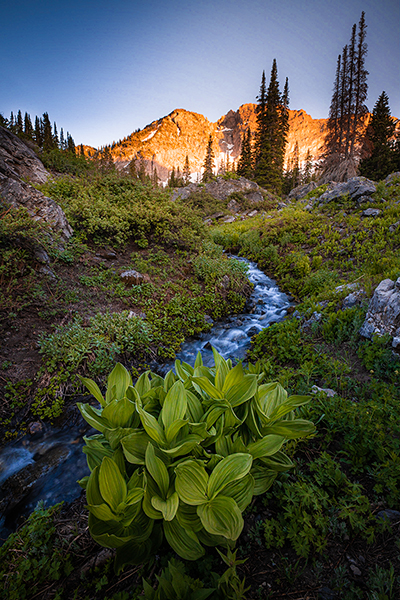
I was on a hike with my wife to Albion Basin, nestled in the Wasatch mountains. We’d just crossed this stream when I noticed the setting sun on the mountains. In addition, the bush in the foreground, which became my centerpiece, was popping in the ambient light. That’s why I love ultra-wide-angle lenses like the 17-35. A scene like that with the naked eye doesn’t look terribly compelling, but the 17-35 helps make it much more dramatic.
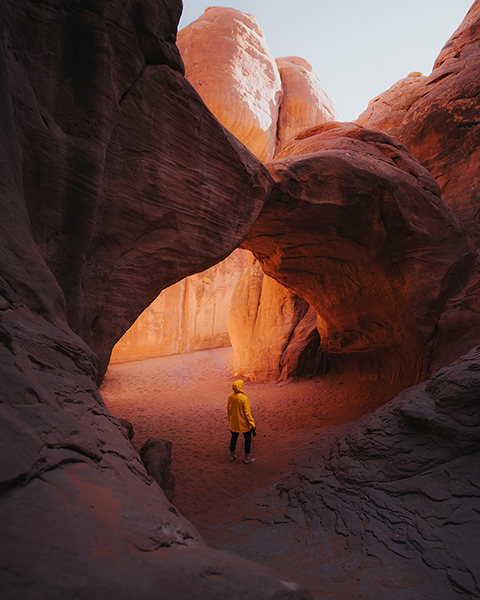
It was close to midday in this photo at Arches National Park. However, what I love about long, narrow channels like this is that the sun doesn’t come blasting in. It’s diffused, like a natural softbox. That’s also a purposeful pose I’m taking. I stood with my head raised in that position, as if I was looking up with a sense of awe at the sandstone.
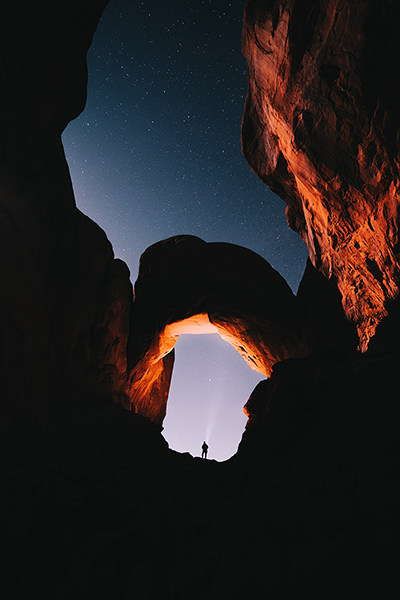
This photo in Arches is one of my favorite nighttime photos. The arch created such a wonderful natural frame. The majority of the glow on the arch is from the flashlight my friend is holding. However, the light on the rock in the upper right is from the moon off to the left. I love how it doesn’t look like regular moonlight. When it hit the red rocks, it created that reddish-orange hue.
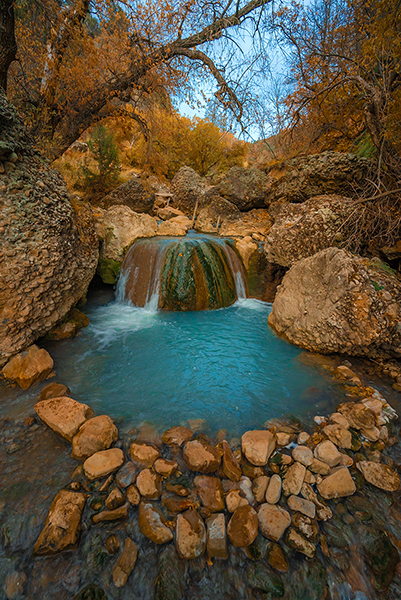
I’d just purchased the 17-28mm lens and wanted to take it for a test run. So, I ventured out to the Fifth Water Hot Springs, about an hour away. The lens picked up the colors so well in that scene. I didn’t do much post-processing here; I think the water is that blue from all of the minerals in it. The contrast of that teal blue against the orange rocks is so pleasing to the eye.
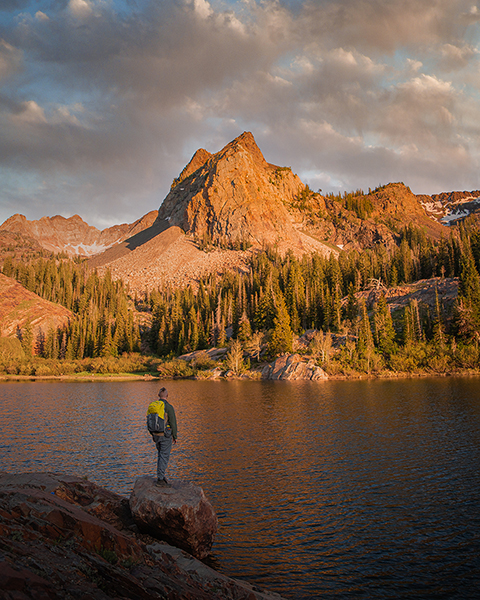
My wife and I took a backpacking trip to Lake Blanche. As we camped there, we were able to enjoy the sunset, with the last rays hitting Sundial Peak over the lake. I captured that traditional alpenglow you want to see in a scene like this. I placed myself in the photo as if I was lost in the grand view of it all—a pensive “Jonny is contemplating life” pose.
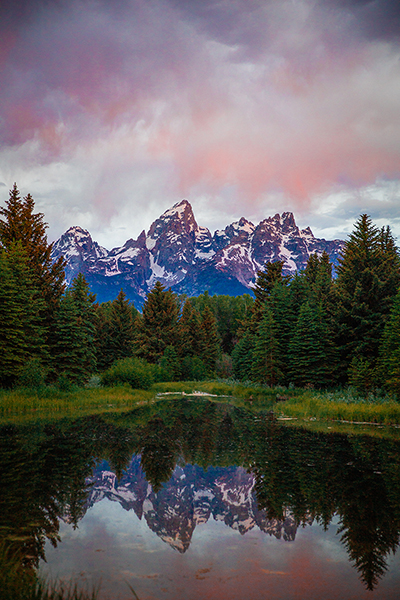
This was my first time in the Grand Teton National Park, and I was completely speechless on how easy it was to find these incredible views. I got to the park before sunrise, and it was completely cloudy. I wasn’t really expecting anything to happen photo-wise. But then those clouds over the mountains caught the light at just the right time, in just the right way. I framed the end of the lake so it was in the middle of the photo to showcase that reflection.
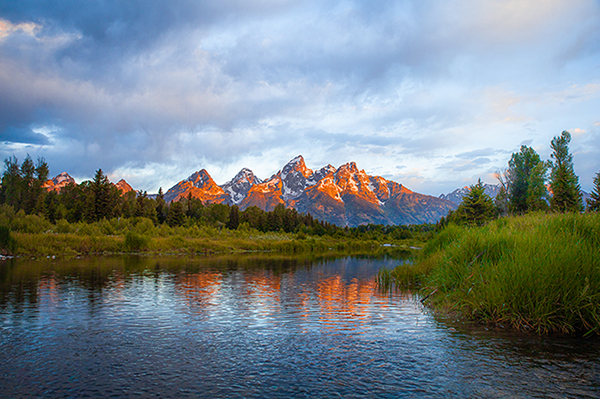
Another example of how important it is be as patient as possible when you’re dealing with Mother Nature also took place in Wyoming. I remember this morning was mostly cloudy and miserable, except for one tiny window when the sun broke through just enough to touch the mountain peaks, at just the right height. You can never truly predict how a sunrise will play out.
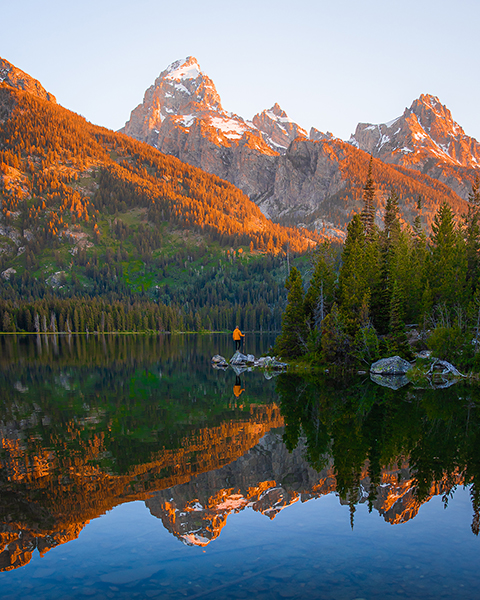
With social media, and especially Instagram, many people don’t like sharing the locations they photograph. Some of these places are special to locals, and when outsiders get wind of them, they can end up getting trashed. However, if I see a site I’m drawn to in another photo, and I know its general area, I’ll go to Google Earth and spend hours poking around until I find it. This location shown here, called Squaretop Mountain, took a lot for me to track down. All I knew was that it was in Wyoming, with two lakes next to it.
But I found it. The photo itself was a bit difficult to set up, because I had to put my camera on an intervalometer and take a photo every second. It took me a few minutes to run all the way around to that rock perch; I ended up taking about 200 photos. The color of my jacket matching the color of the sunlight hitting the mountains was unintentional. It ended up being a lot more orange than it really was. It just got picked up in the same spectrum as the sunrise and complemented the rest of the photo.